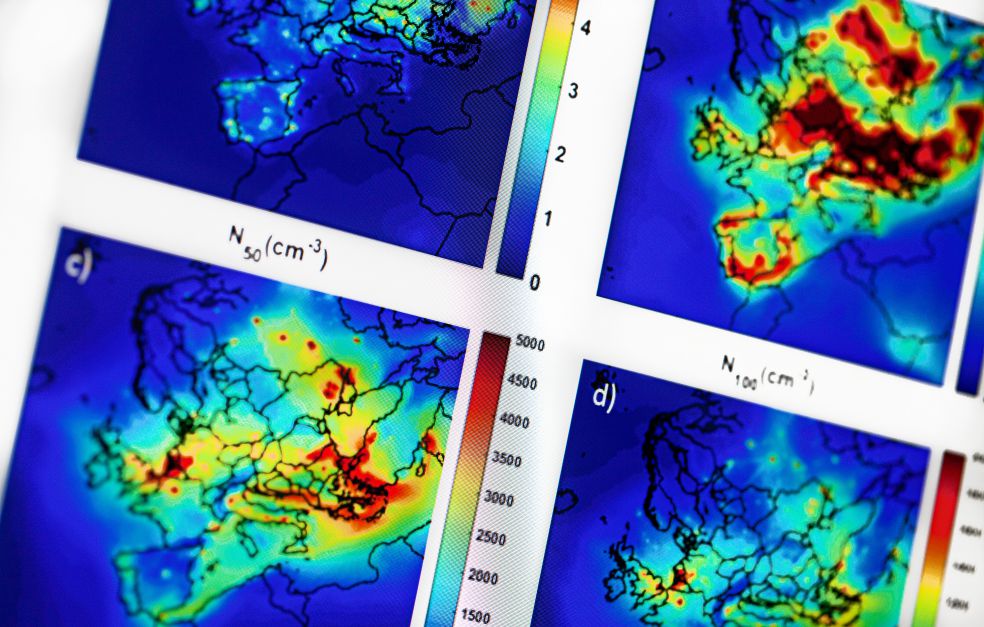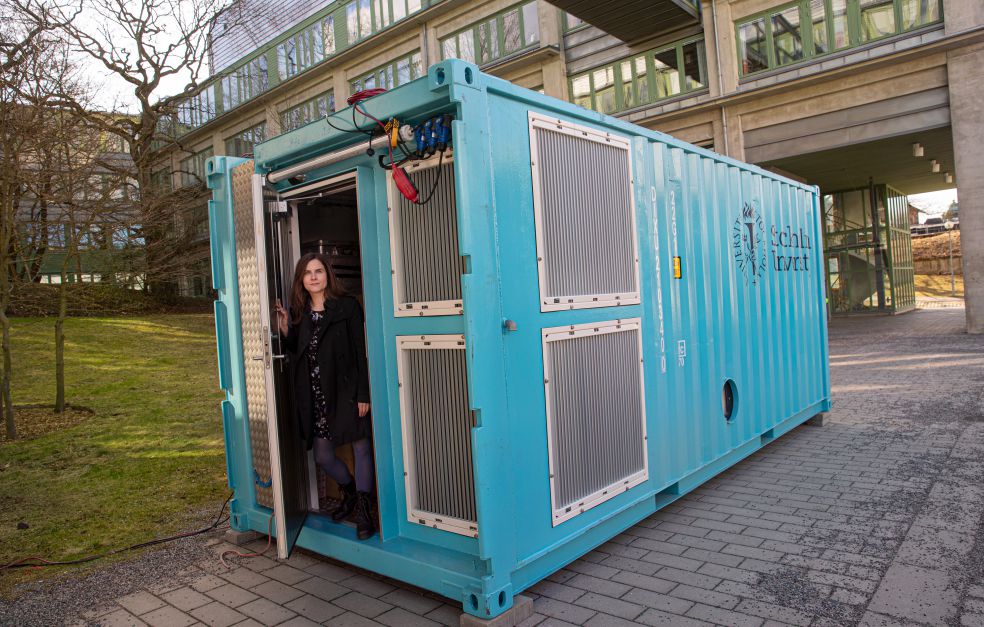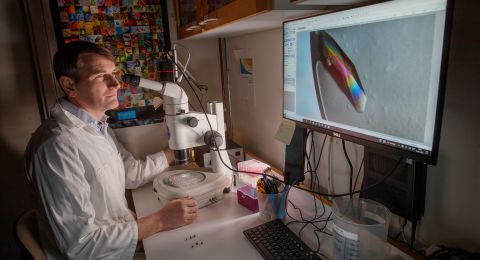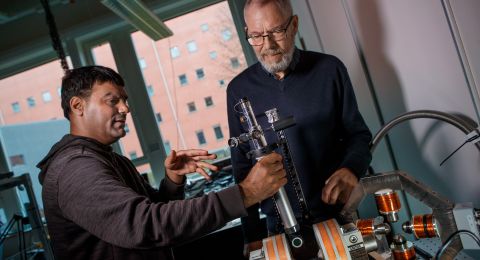Aerosol particle are fine solid particles present in the atmosphere and the air we breathe. They can impact both our health and the climate, and are one of the main uncertainty factors in climate models. Ilona Riipinen is studying how the particles interact with clouds and precipitation in order to refine cloud formation and climate models.
Ilona Riipinen
Professor of Atmospheric Science
Wallenberg Scholar
Institution:
Stockholm University
Research field:
Atmospheric aerosol particles, their sources, sinks and development, and the role they play in cloud formation and climate
The atmosphere – the fascinating mantle of gas enveloping the Earth – is home to a constant succession of complex large- and small-scale chemical and physical processes that create conditions for life on Earth by impacting temperature, climate and weather, photosynthesis and the air we breathe.
Riipinen has been interested in microscopic processes in the atmosphere since her time studying atmospheric physics at Helsinki University in Finland, her home country. She is Professor of Atmospheric Science at Stockholm University. Since 2011 she has headed a research team studying how aerosol particles are formed and transported in clouds.
“Although our knowledge has improved in recent years, we are still in the early stages of understanding the interaction between aerosol particles, clouds and precipitation.”
Various combustive processes, as well as volcanic eruptions, forests and deserts are all common sources of aerosol particles. They range in size from few nanometers to hundreds of micrometers. According to Riipinen, studying them is rather like searching for a needle in a haystack.
Why then are aerosol particles of such interest and importance? Riipinen explains that they impact the Earth’s energy balance and climate because they interact with solar radiation and affect the way clouds form. They are also air pollutants, and breathing them in may harm our health.
“Aerosol particles and clouds are also one of the main uncertainty factors in current climate models. I hope our work will improve the models and enhance our understanding of what specific emission reductions mean for temperatures on Earth.”
Sinks and sources
Riipinen is primarily engaged in pure scientific research, but ultimately the aim is to be able to predict how political decisions impact emissions and air composition, for example.
“To do this we will need to have reliable air quality models and climate models. They will have to incorporate key processes that control the quantity of aerosol particles in the air. We also need more detailed knowledge of the particles and the part of the atmosphere where they are found – at the surface or higher up. And we want to know how different pollutants are carried into the atmosphere, how far they can travel from their point of emission, and how they impact clouds and precipitation.”
“I think we have a good chance of making an important contribution to knowledge in our field, so I feel inspired!”
Riipinen and her research team have used theoretical data modeling of particle data from monitoring stations and laboratory experiments to study the factors determining which aerosol particles are absorbed by cloud droplets, and how they are removed.
“We’ve examined the molecular and microphysical processes involved in the formation of ice crystals in the atmosphere, and the parameters controlling them. We have also begun to take a look at how these processes are represented in climate models.”
Clouds and precipitation are not only particle sinks; they can also act as sources capable of transporting air pollutants within the atmosphere, from the Earth’s surface to the upper level of the atmosphere or even farther. Riipinen will be examining these processes more closely in the project she is conducting as a Wallenberg Scholar.
“I now have the opportunity to explore something new, which is fantastic. I can adopt a broader approach and include more experimental components, both in the field and back in the lab.”
Cloud chamber at CERN
The particle processes are non-linear and occur on microscales. They are also linked to the large-scale circulation that transports water vapor, for instance. All this makes these processes hard to study.
“To see the big picture we need long time series of data. This is an issue we are constantly wrestling with – being able to gather enough data in the field.”
The research team has about ten portable instruments that fit into a container and are transported to favorable sites for field studies.
“We use the instruments to collect data that help us to relate the molecular situation and chemical composition to particle size distribution and phases of ice crystals and cloud droplets. At the moment they are in Italy, where we are monitoring air pollution. The next stop will be the island of Réunion, east of Madagascar.”
Another important part of the new project is to monitor aerosol particles in a cloud chamber at CERN, the world’s largest particle physics laboratory in Switzerland. For some time now the research team has been a member of CLOUD, an international experiment examining particle formation in clouds.
“Thanks to the Scholar grant, we can recruit a PhD student who will work at CERN. I think we’re going to make some really interesting discoveries over the next few years, improving our knowledge of the role played by clouds and precipitation as sources and sinks of aerosol particles.
Text Susanne Rosén
Translation Maxwell Arding
Photo Magnus Bergström






